
BBDO Guerrero hopes to have the answer in Font Books, a collection of original, free typefaces based on classic novels.
from It's Nice That https://ift.tt/3bZrXl3

BBDO Guerrero hopes to have the answer in Font Books, a collection of original, free typefaces based on classic novels.

In the winter of 2016, the New York-based creative began photographing the small towns and villages of Siberia. Here, he tells us more about his fascinating project.
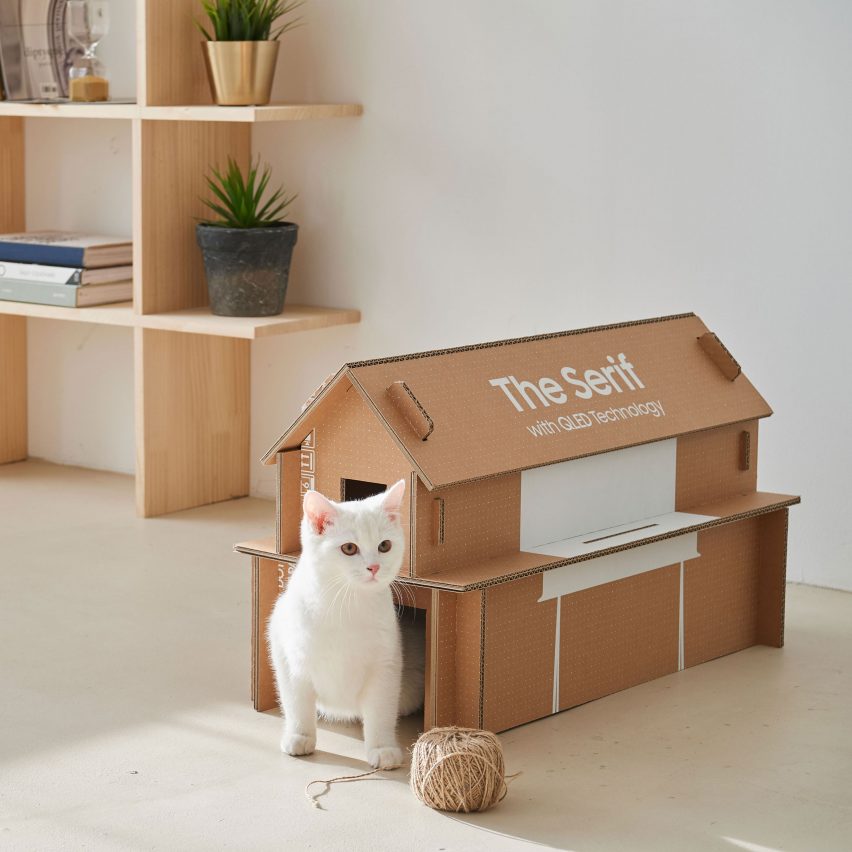
Samsung and Dezeen have teamed up to launch a global contest seeking innovative designs for the home that can be made by repurposing cardboard packaging.
The Samsung Out of the Box Competition challenges contestants to design household objects that can be built from repurposed cardboard at home.
Open for entries until 29 May 2020, the contest is free to enter for anyone over the age of 18 and features prize money totalling $20,000.
Click here for more information about how to enter, including the brief and entry rules.
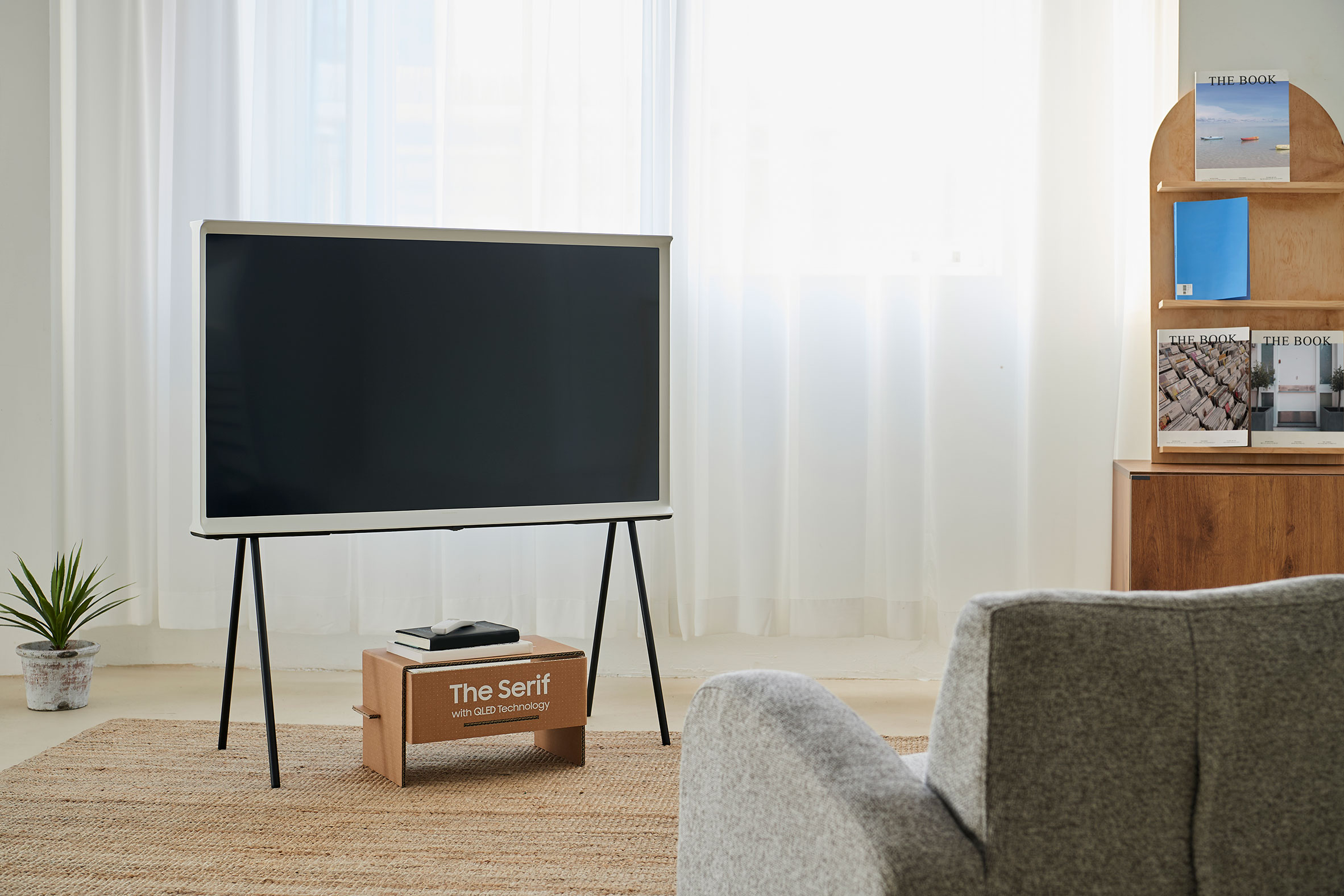
The competition is inspired by Samsung's Eco-Packaging, which was named an honouree at this year's CES Innovation Awards.
The packaging is part of Samsung's ongoing efforts to make its business more sustainable, which it set out in a report last year, by making its components and manufacturing more environmentally friendly, and reducing greenhouse emissions and other waste.
Competition inspired by Samsung's Eco-Packaging
Electronics companies use thick, corrugated cardboard boxes for shipping in order to properly protect the goods inside. These boxes often end up as waste, as the size and weight of the cardboard boxes means they are difficult to recycle in an average home, which contributes to around 90 billion cardboard boxes being discarded after a single use every year in the US alone.
The Eco-Packaging concept, which is a first in the industry according to Samsung, aims to reduce this waste by providing customers with a way to repurpose its television packaging into new household items.
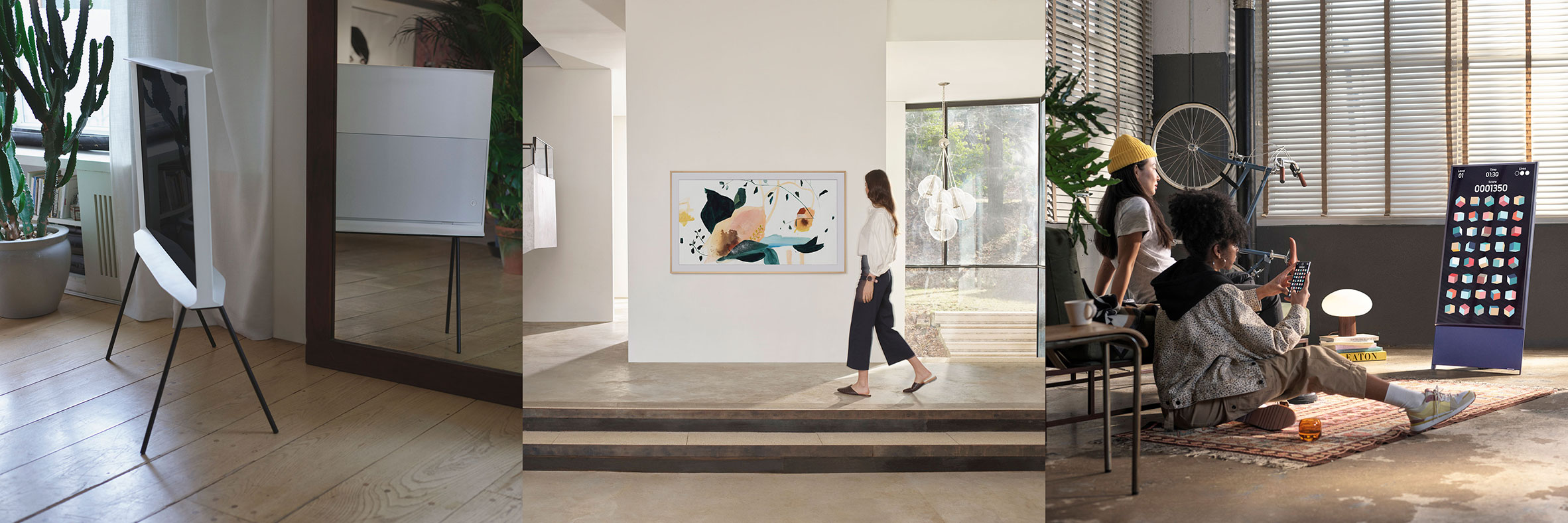
Samsung currently uses Eco-Packaging to ship its The Serif, The Frame and The Sero televisions to customers and plans to introduce the concept to more televisions in future.
The Serif television features a distinctive I-shaped profile. Designed by French designers Ronan and Erwan Bouroullec, it is intended to be more like a sculptural item of furniture than a piece of technology.
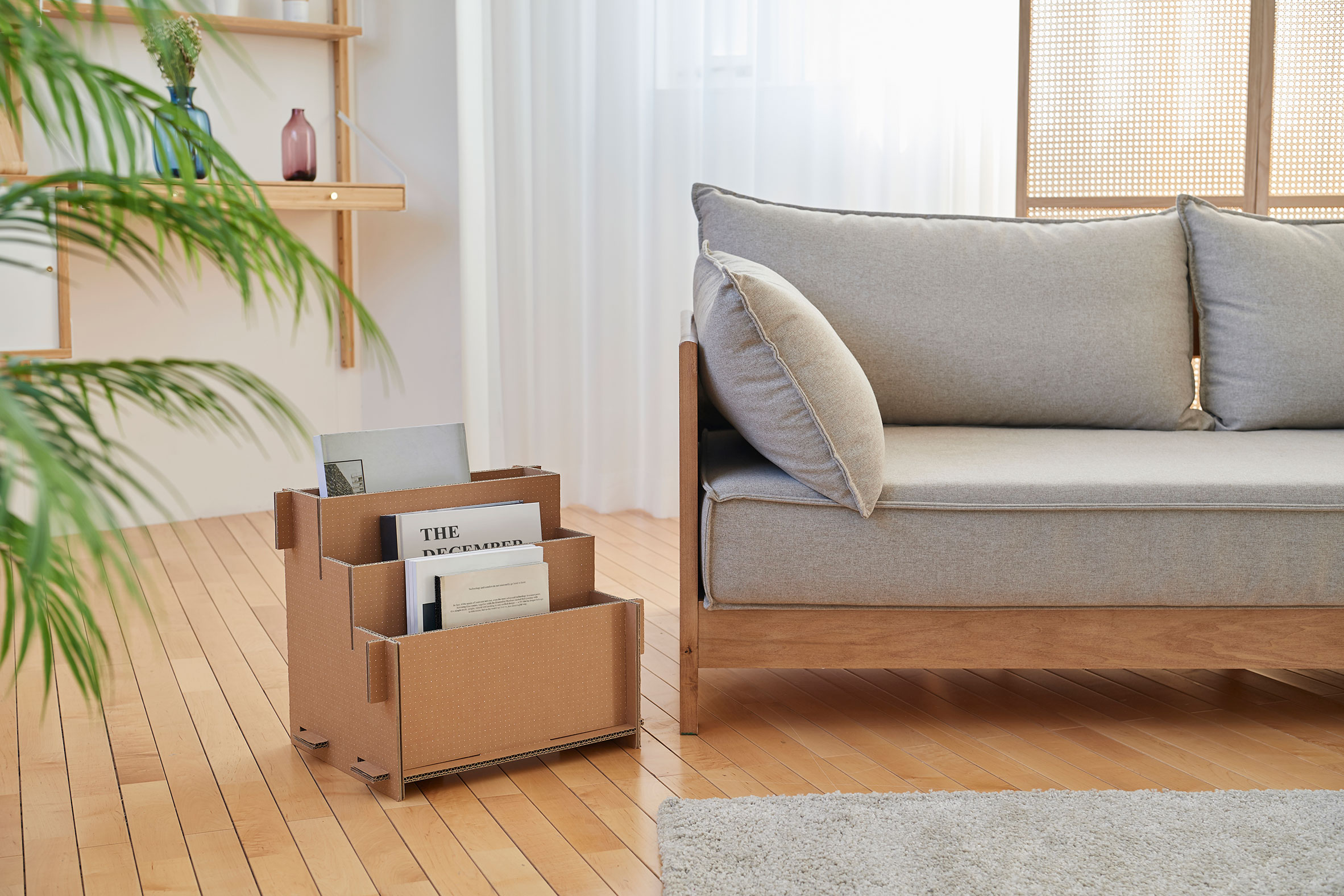
The Frame is designed to look like a framed piece of art, either hung on the wall or on an easel. Users can choose to display a range of artwork on the screen when it's not in use, so that it disappears into the decor of the room it's in.
The Sero, which means "vertical" and "new" in Korean, is a television with the ability to pivot between horizontal and vertical orientations. It has been designed to smoothly display both traditional video content, as well as vertical video formats designed for mobile consumption.
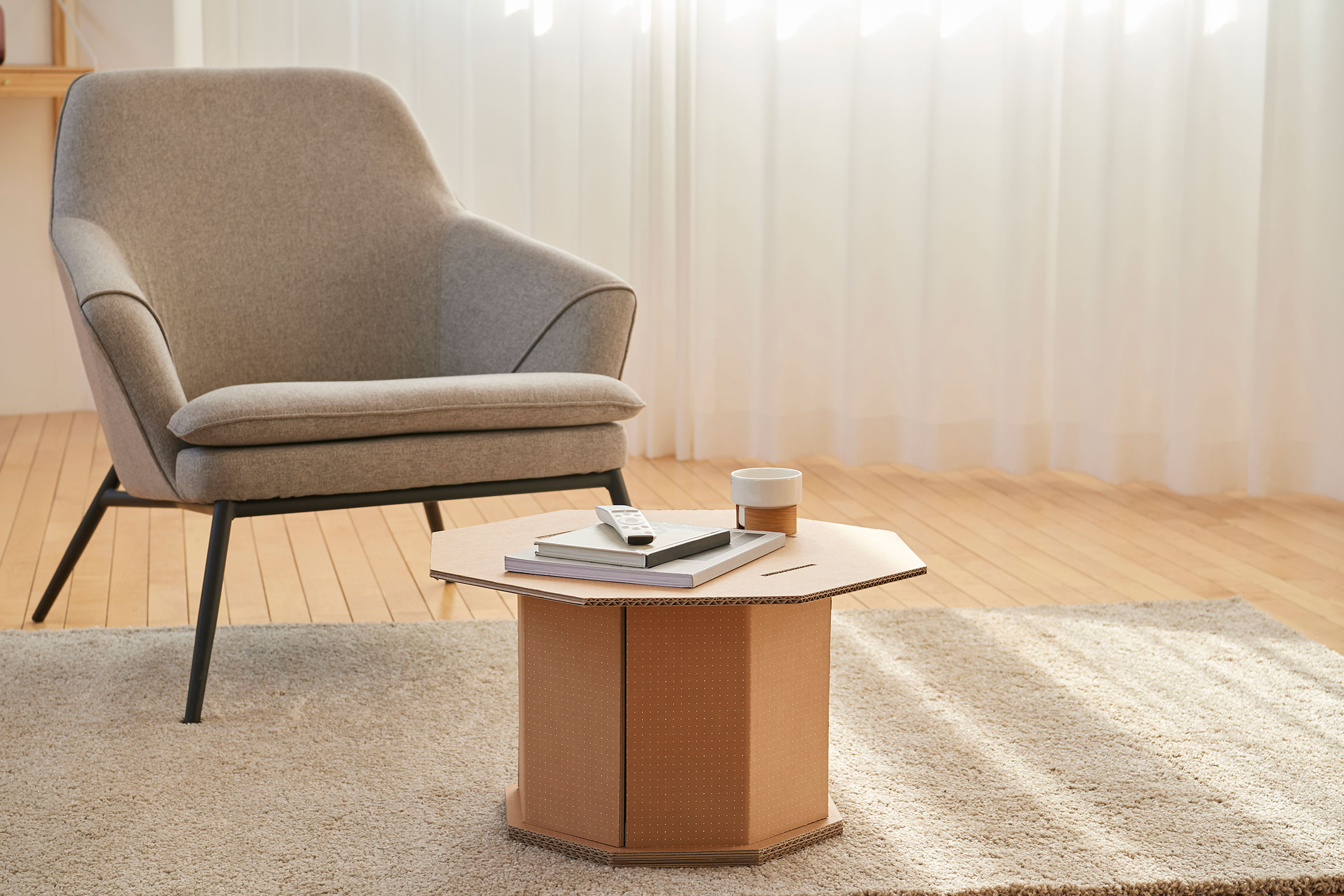
Each Eco-Packaging cardboard box is printed with a special dot matrix pattern, which, when the box is opened out flat, can be used as a guide to create a range of different objects for the home by cutting and reassembling the box.
The sturdy nature of the cardboard makes it suitable for constructing a range of different objects. Samsung provides instructions for different furniture designs through a QR code located on the box. Currently available designs include a TV console, a storage box, a magazine rack and even a cat house.
Create an innovative design by repurposing cardboard packaging
By launching the design contest, Samsung hopes to increase awareness of its Eco-Packaging concept and get more people thinking about and sharing ideas for how cardboard packaging can be repurposed.
"The competition with Dezeen is a way to make our eco-friendly message more widespread, with innovative ideas from entrants," said Samsung. "It is a chance for audiences to consider how to help protect our environment by thinking 'out of the box' about how we can reuse cardboard packaging."
The contest is seeking innovative new objects for the home that can be made by repurposing cardboard packaging, which are different to the examples presented by Samsung.
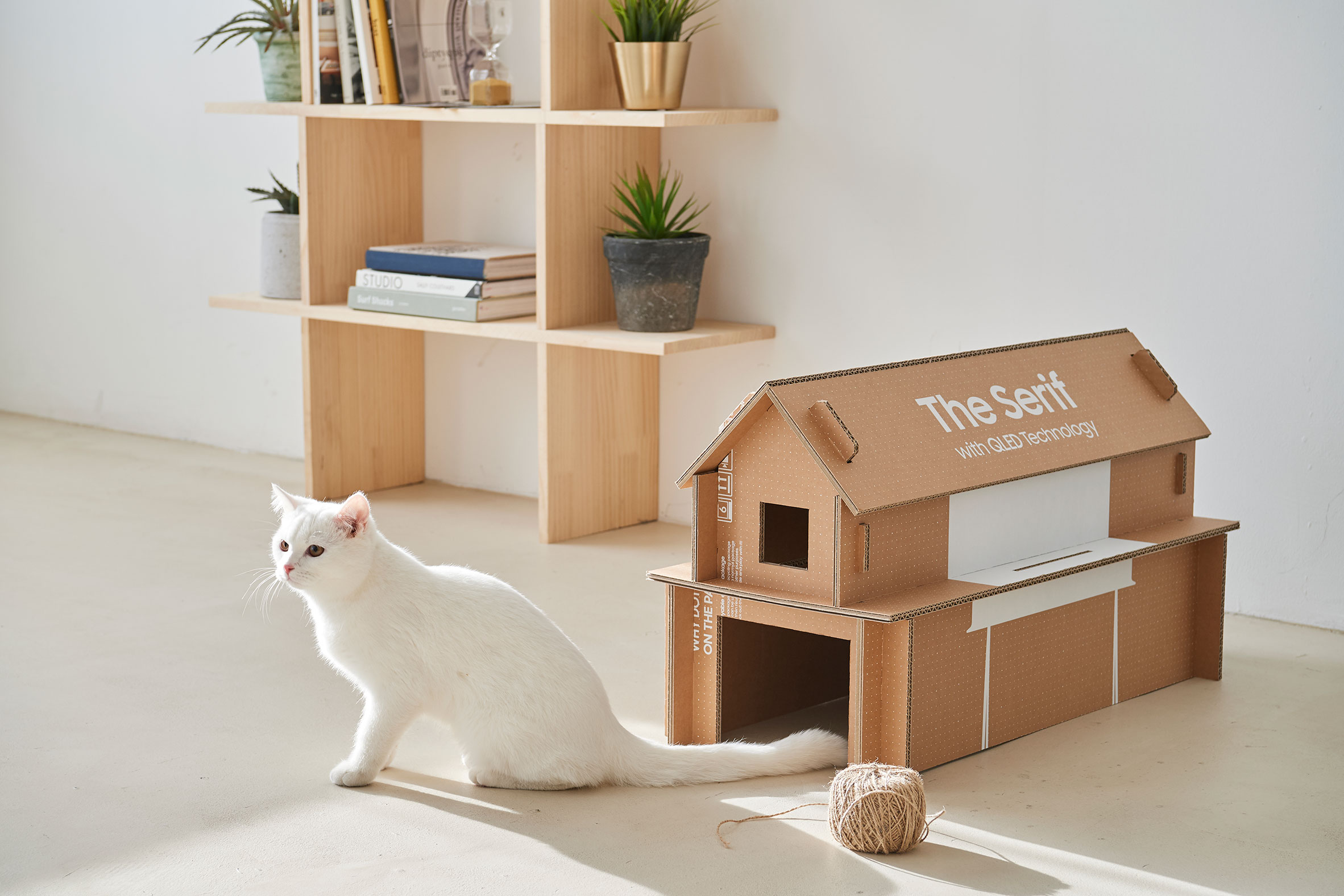
Contestants are free to design any kind of functional object for the home that can be made by reusing cardboard packaging.
The design must be something that anyone could build for themselves at home. It must therefore be practical to assemble with everyday household tools and not require any specialist skills or equipment.
Entrants should also consider who their product is designed for and how it will fit in with and enhance their lifestyle. Entrants must submit a short description of their concept explaining what lifestyle the object has been designed for and how it is assembled. In addition, they should submit up to ten images showcasing their design.
$10,000 prize for the winner
A shortlist of the best designs will be published on Dezeen in June.
A jury comprising Samsung executives and Dezeen editors will select first, second and third place. These will be announced on Dezeen and published on Samsung's @SamsungTV Instagram account in September 2020.
The winner will receive a top prize of $10,000, the runner up will receive $5,000 and third place will receive $3,000. The fourth- and fifth-placed entrants will receive $1,000 each.
Competition closes on 29 May
Entries for the Samsung Out of the Box competition close on 29 May 2019.
For more information about how to enter, including the brief and rules, entry form and full terms and conditions, go to www.dezeen.com/outofthebox.
The post Samsung and Dezeen launch $20,000 Out of the Box Competition appeared first on Dezeen.

The platform aims to support projects made and delivered entirely at home, providing vital financial help for makers out of work.
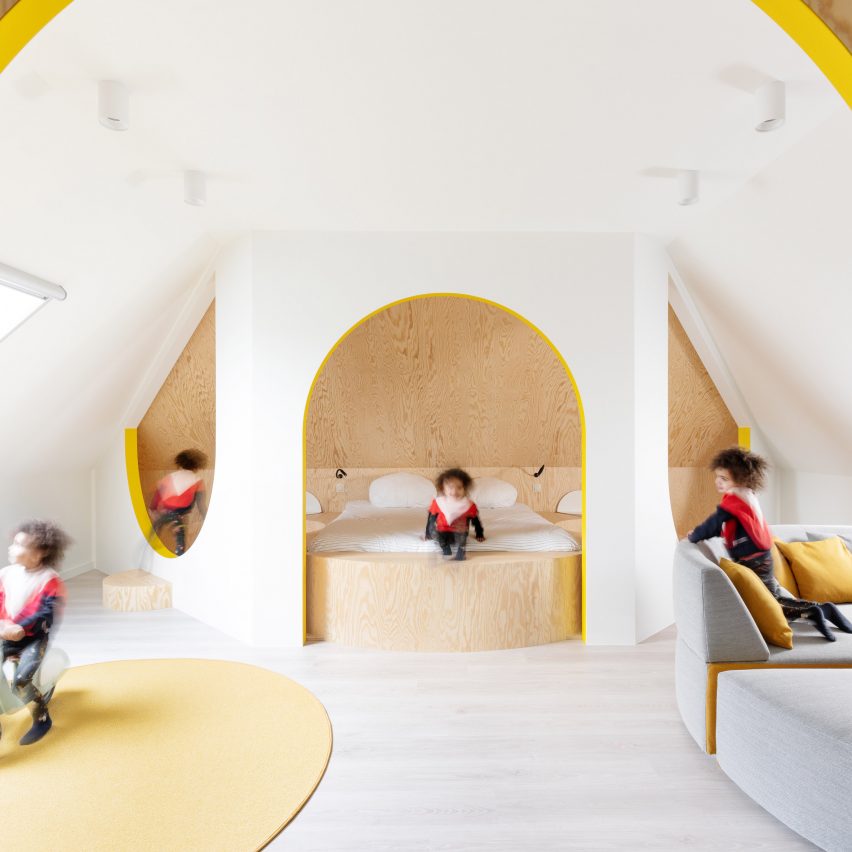
Van Staeyen Interieur Architecten has converted a dark and dusty attic in Antwerp into a living space that features arched portals, curvy furniture and yellow decor accents.
The attic – which was previously just used for storage – is set within a young family's home in Kasterlee, a municipality that's 45 minutes drive from central Antwerp.
Local studio Van Staeyen Interieur Architecten was asked to turn the attic into a multi-functional space.
The clients wanted the space to serve as a guest room for visitors, and a social area where the family's daughters can spend time with their friends as they get older.
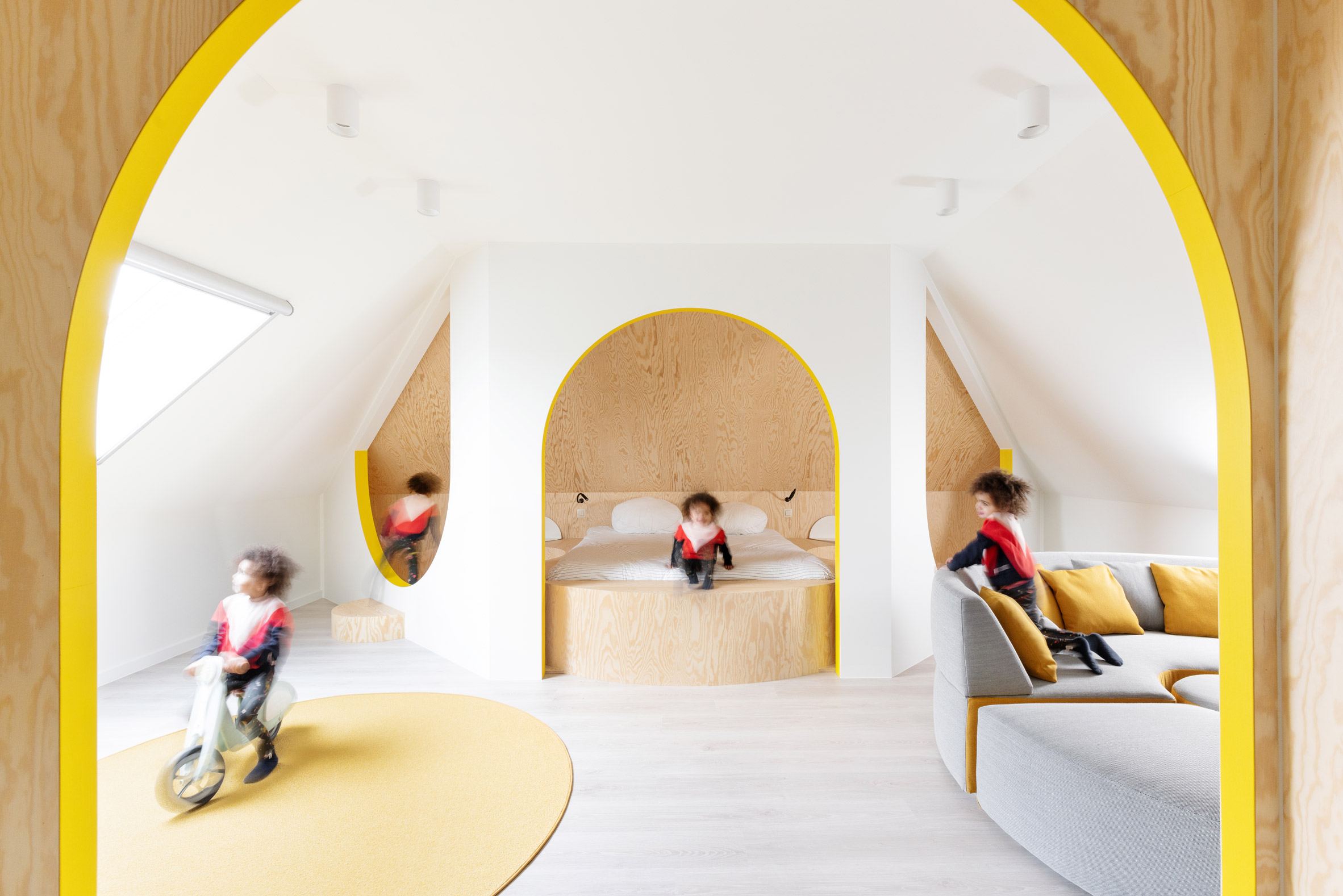
"The attic can be used as a studio, a room to rent, a place to watch tv, count the stars, listen to music, chill with friends, get carried away on a romantic night," Johan Van Staeyen, founder of the studio, told Dezeen.
"Everything is available to sleep, cook, shower, and hang out."
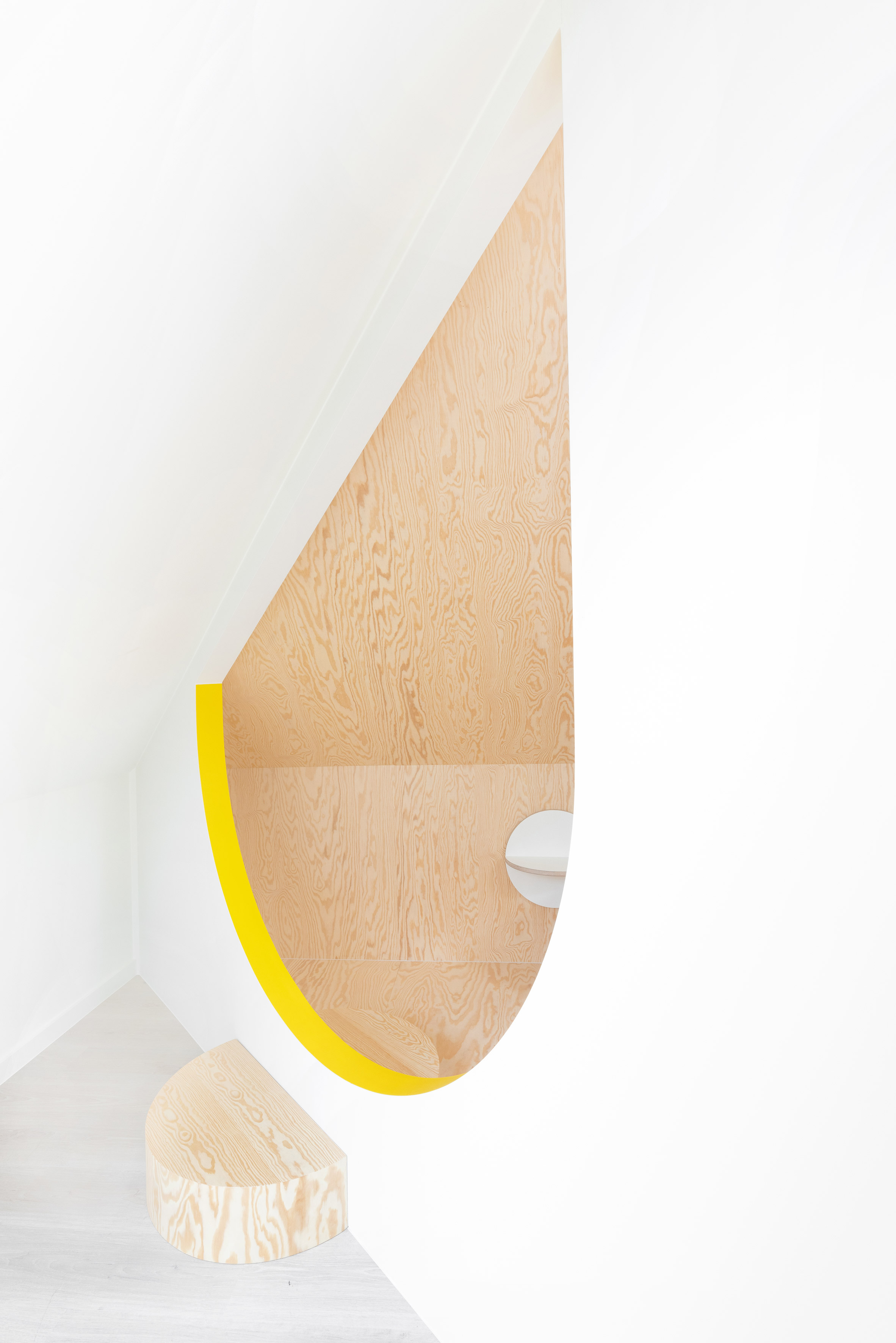
Tucked under the pitched roof with two sloping walls, the attic has been divided into a bedroom, living room and bathroom.
A spruce-clad bedroom with a circular built-in bed is located at the far end of the space, separated from the living room by a curved partition clad in white laminated sheet material.
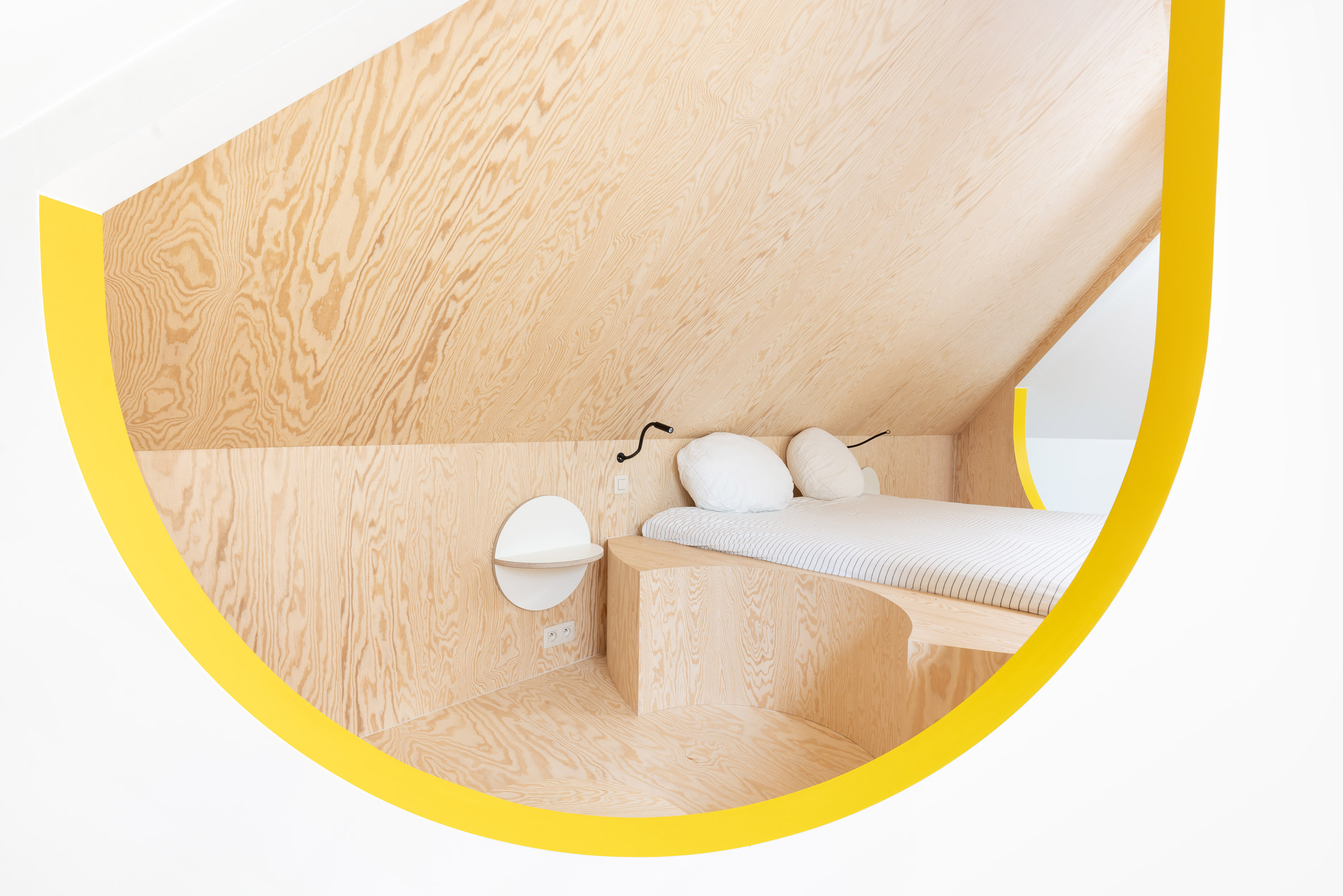
It's punctuated with three large U-shaped portals, one of which is an entrance and the other two are window-like openings. They have each been bordered with sunshine-yellow paint.
"Yellow stands for optimism and energy," said Van Staeyen of the colour choice. "It makes you more active and stimulates mental activity."
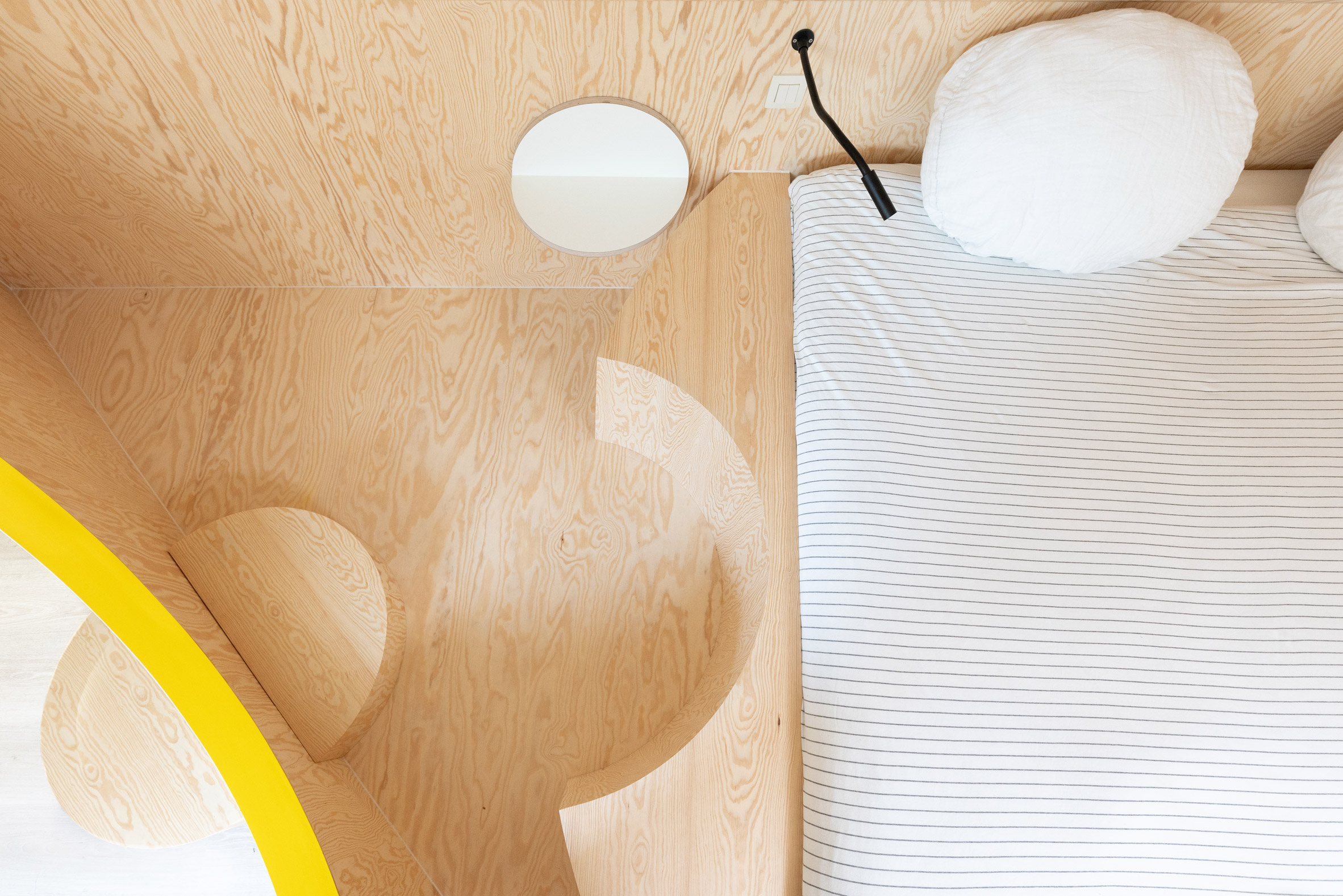
The living room, lit by two skylights, is a bright space with white-painted walls and pale timber flooring.
A bespoke circular sofa upholstered in powder-grey and ochre fabric occupies one side of the room, while a yellow circular rug is on the other.
The sofa can be split into three parts: a curved semi-circular sofa, a U-shaped bench seat and a small circular ottoman which slots into the centre.
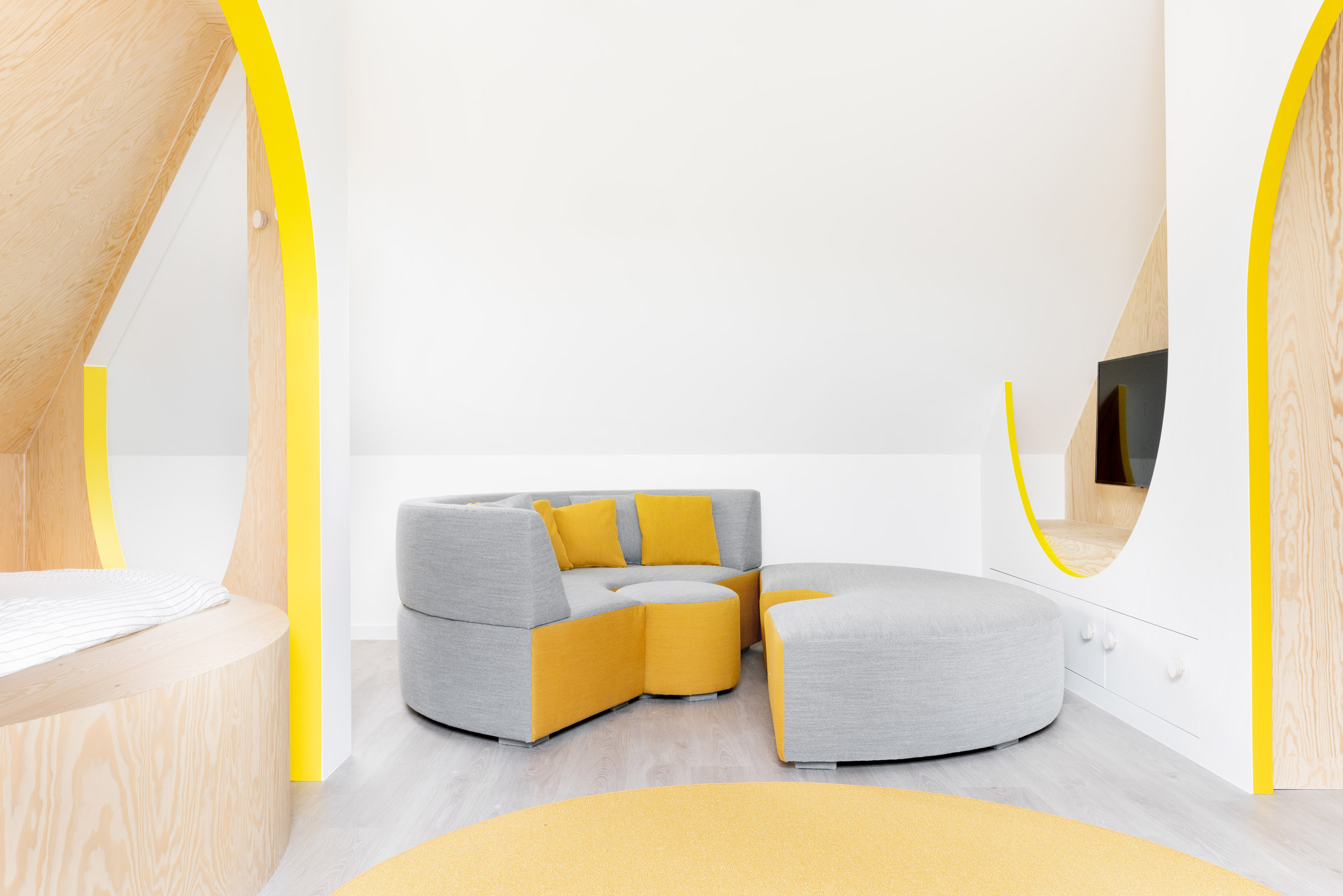
Mirroring the bedroom space, U-shaped openings have been cut into the living area's rear wall to form two recesses – one frames a television and the other is used for shelving.
The bathroom is located behind the shelves and a small storage area is behind a door next to it.
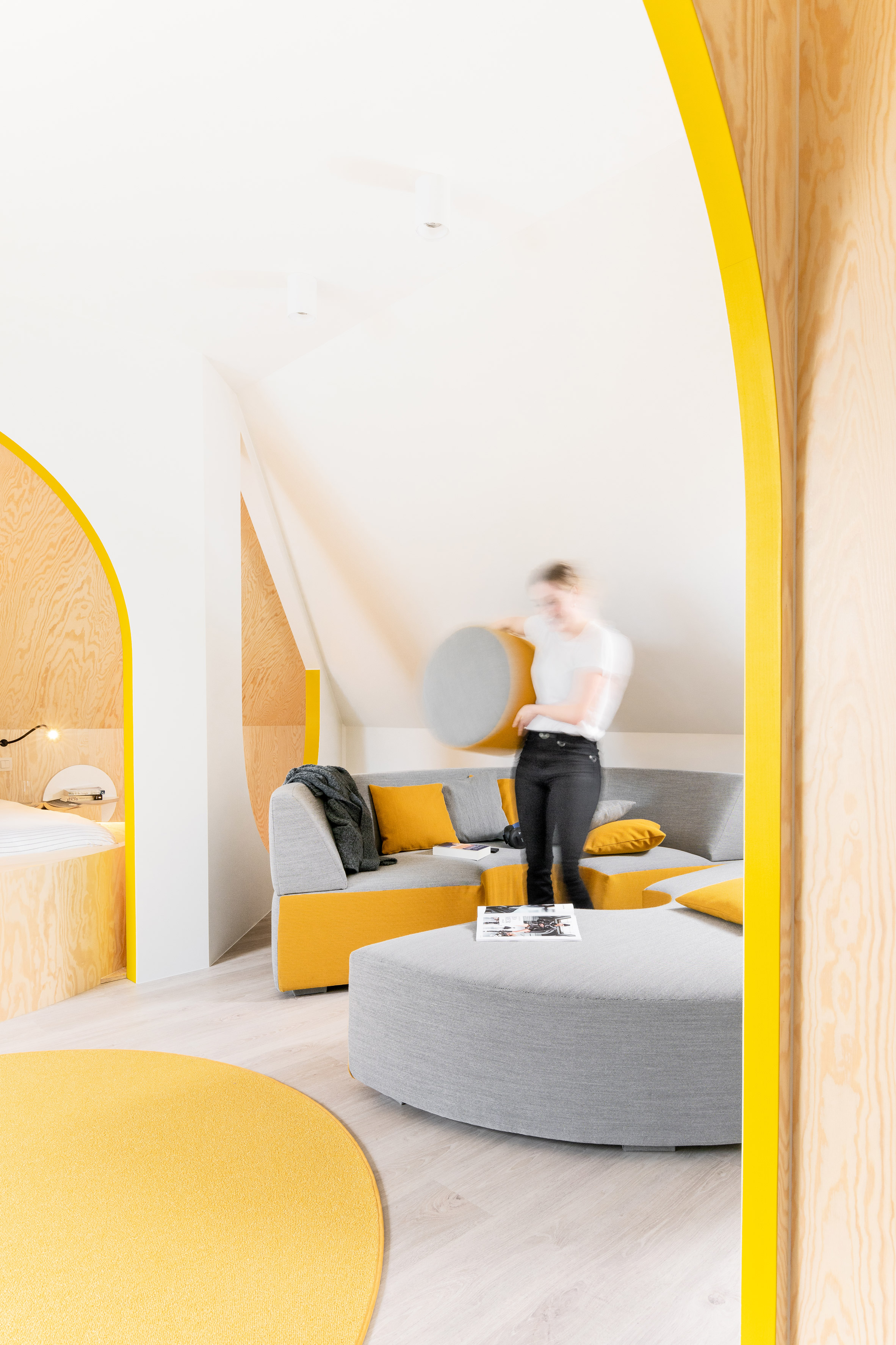
The studio has described the overall aesthetic of the space as "relaxing geometry".
"Curved lines do generate a more relaxed feeling than straight lines," said Van Staeyen. "The yin and yang sign, the infinity-sign, the treble clef are good examples of symbols with curved lines."
"Animals with round heads and ears also create a certain attractiveness, charm or loveliness because of their roundness.
"Relaxing geometry is curve-inspired – it enlarges and softens the space, and gives it a more welcoming feeling."
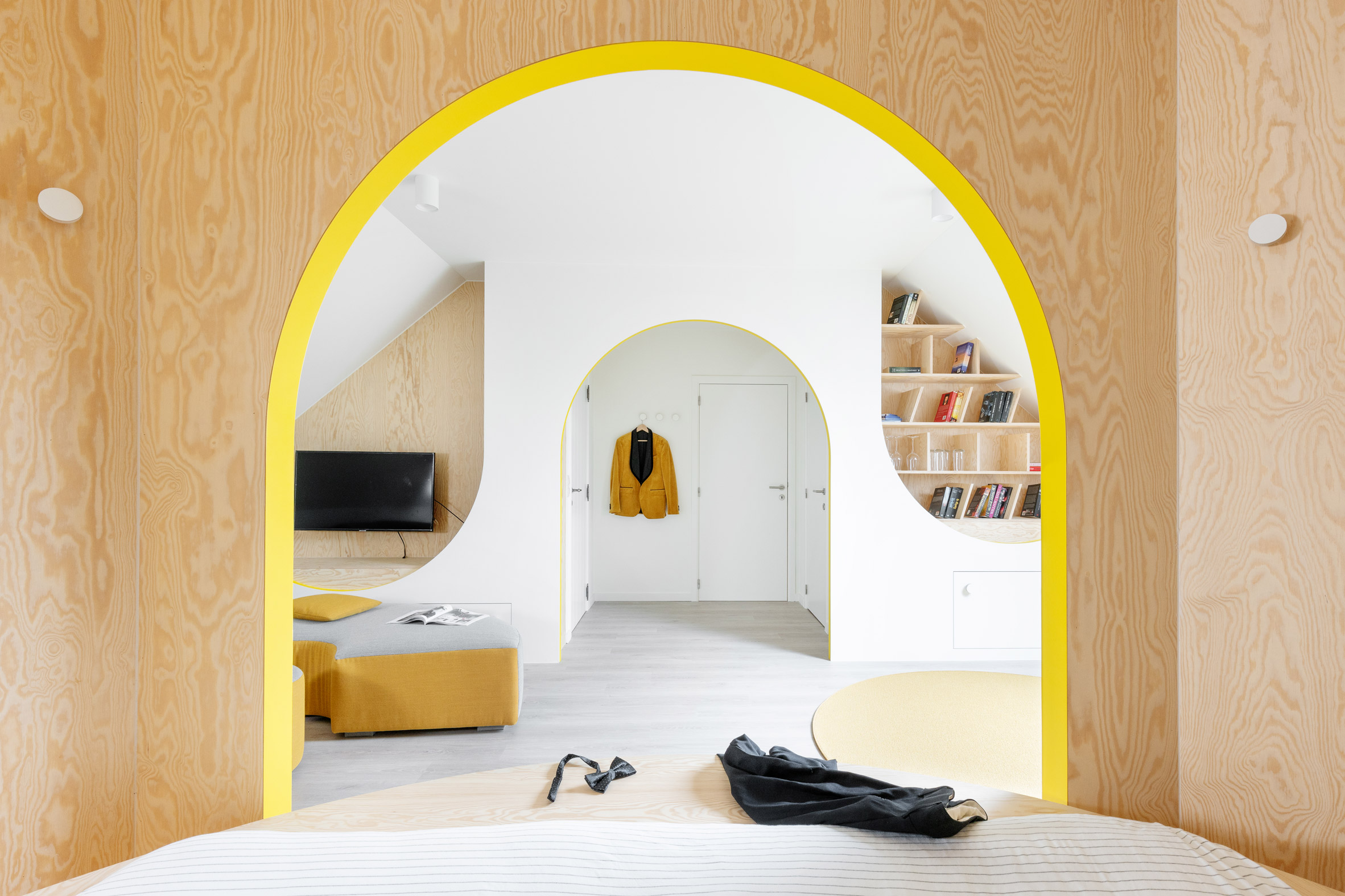
Van Staeyen Interieur Architecten is based in Antwerp's Markgrave neighbourhood and is led by Johan van Staeyen and Wim Clissen. Recent work includes the renovation of a townhouse, which the studio updated with block-colour surfaces and built-in furniture.
In 2018, the studio also transformed a chapel in a medieval cathedral into a gothic-inspired cafe.
The project went on to win the civic and cultural interior of the year category in the inaugural Dezeen Awards, where judges praised it for its "simple, playful and clever" design.
Photography is by Jochen Verghote.
The post Van Staeyen Interieur Architecten refreshes Antwerp attic with pops of yellow appeared first on Dezeen.